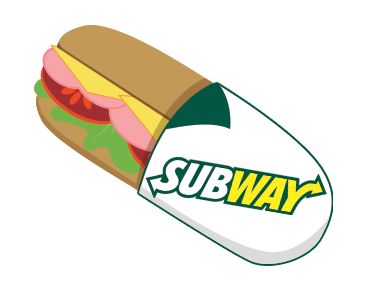Today is National Sandwich Day; but America’s favorite handheld meal isn’t always the greatest go-to when it comes to nutrition.
According to one study, 49% of Americans age 20 and older eat a sandwich every day. And sandwiches account for roughly 1/5 of daily sodium intake.
If you stack it wrong, your next sandwich could set off a hypertensive crisis.
Here’s how to build a better sandwich working your improvements from the outside in:
Beware of Your Bread
The salt in cheese and processed meat is low hanging fruit in the sandwich sodium conundrum. You should actually be more afraid of your bread and the sodium that it’s sheltering.
A typical slice of bread can have 250-400 mg sodium – and that’s per piece. Considering that the Dietary Guidelines for Americans recommend less than 2,300 mg per day, it’s not worth it to suffer so much sodium in sliced bread.
A few rules of thumb for selecting better breads:
- Go for whole – look for the word “whole” in the first ingredient & avoid products “made with” while grains; “made with” just usually means white bread batter with a bit of whole grain thrown in at the end
- 3 g fiber rule – a bread with whole grain in the first ingredient will usually have 3 g dietary fiber or more per slice; 3 g fiber per slice is a good bet when you’re picking your pan
- For sodium sleuths – look for around 150 mg sodium or less per slice
Some best bets for lower sodium whole wheat breads are:
- Pepperidge Farm 100% Whole Wheat Bread (150 mg sodium per slice)
- Ezekiel Low Sodium Sprouted Whole Grain Bread (0 mg sodium per slice)
- Dave’s Killer Bread 100% Whole Wheat Bread (160 mg sodium per slice)
For a good read on sodium sneaking around in your breads, check out this CSPI article “Finding the Best Sliced Bread”.
Get Choosy with Your Cheese
Cheese and salt are synonymous. You can’t eat low salt cheese because a.) there’s no such thing and b.) it would be revolting if there were.
Instead, choose naturally lower-sodium cheese selections, such as:
- Mozzarella
- Cream cheese
- Cottage cheese
- Swiss
- Monterey Jack
- Ricotta
- Parmesan
When it comes to lower sodium cheeses that actually taste legit, try Alpine Lace – they cut the saturated fat and salt, without compromising taste.
Lower Lunch Meat Sodium at Home
One surefire way to curb the sodium in your sammies is to select meat or cheese, but not both. Luncheon meats and cheese are naturally higher sodium choices, and to be honest, you don’t need both.
But if you must maintain meat in your lunch, look for lower sodium versions of old standbys like turkey, ham and roast beef.
Another easy (and cheaper) option is to just rinse your standard lunch meat under running water. This is estimated to reduce sodium by about 30%.
When it comes to firing up the faucet, keep in mind you are also rinsing away the preservatives, so be sure to eat your rinsed lunch meat right away vs. re-storing in the refrigerator.
Cool it on the Condiments
If you cut the sodium in bread, meat and cheese, you’ve got the most serious salt problems out of the way. But sodium lurks in condiments too.
Keep these high sodium condiments on the minimum:
- Ketchup (150 mg sodium in 1 tablespoon)
- Relish (160 mg sodium in 1 tablespoon)
- Barbecue sauce (175 mg sodium in 1 tablespoon)
- Steak sauce (280 mg sodium in 1 tablespoon)
- Low fat salad dressings
If you want to slather your bread with lower sodium condiments, why not try making your own? Check out these home made lower-sodium condiment ideas from Cooking Light. They whip up in no time and taste so much like the real deal that you won’t miss the salt.
Sandwich Day at SUBWAY
If you want to get in on celebrating National Sandwich Day – Subway is offering a buy one, give one sandwich deal at participating SUBWAY restaurants. They’re launching this along with their “exclusive” SUB Emoji on Twitter.
You can get in on the game by tagging your tweets with #savelunchbreak. And if you want to really soup up your SUBWAY, ask your Sandwich Artist to “run it through the garden“. Piling your SUBWAY high with all of the fresh vegetable offerings in a footlong can net you up to 4 full servings of vegetables.

